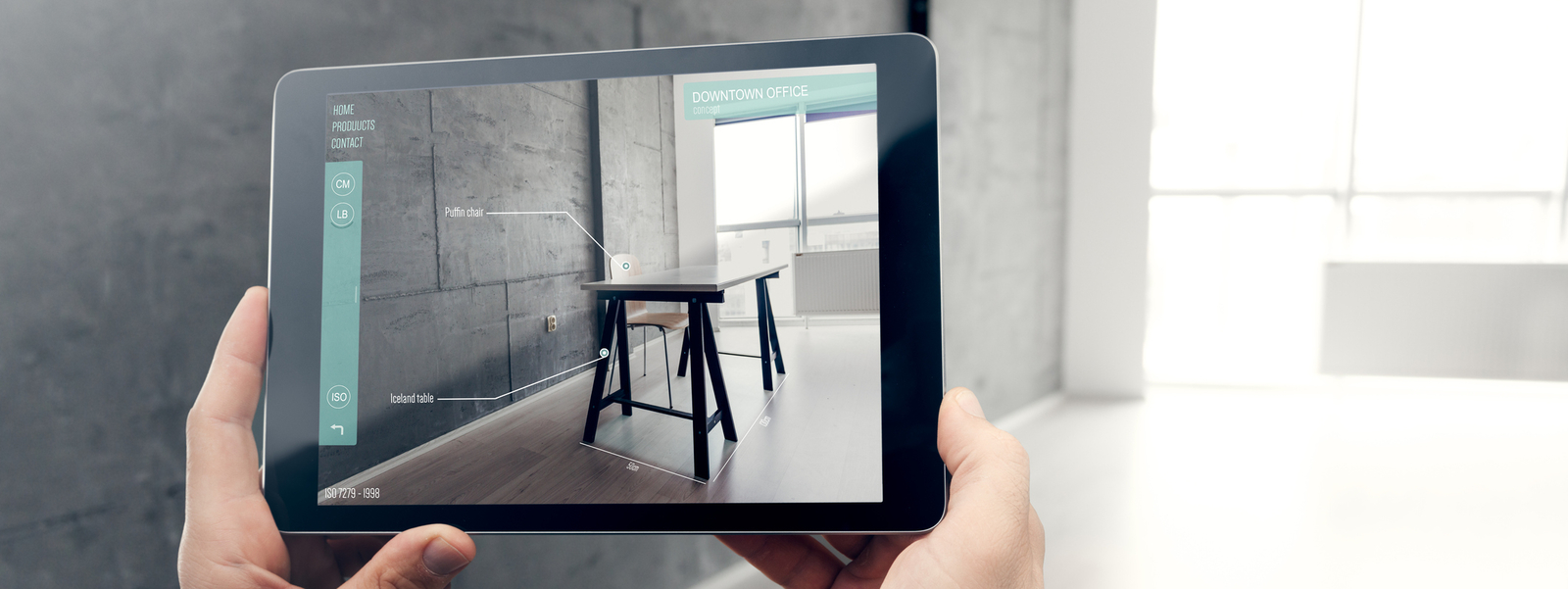Technology has advanced by leaps and bounds over the past decade, but it wasn’t until more recently that capabilities like augmented reality (AR) and voice control became powerful tools in commerce customer experience. More dynamic devices and technology like Apple’s ARKit means people have access to these capabilities in their pockets.
Early adopters of these technologies (like IKEA with its app IKEA Place) have motivated commerce players to take advantage of these opportunities and stay ahead of competitors in the race to achieve the ultimate digital experience design.
- 97% of consumers believe new technologies either always or sometimes enhance the customer experience
- 42% of consumers say features like augmented reality (AR) enhance the customer experience
- 54% of US smart speaker owners have made a purchase via voice commerce
How Do You Deliver on This Trend?
Understand Your Augmented Reality Opportunities
Augmented reality is an especially powerful technology in commerce. As mobile platforms like Android and iOS invest more resources in AR, the capabilities are progressing at a rapid rate. Many businesses are using image recognition to launch into an AR experience, giving customers the ability to use their phone to identify objects and access product information with just a point of their camera phone.
AR can be especially valuable to merchants with products that are more expensive or larger in size. Furniture manufacturers or car dealers can use AR experiences to enable their customers to view and experience products in their space and at scale from anywhere in the world. A prime example of a successful AR application is the “Can it Fit?” feature in Edmunds’ app, which allows car shoppers to scan their garage and then provides a list of cars that would fit in the space.
Explore Voice Technology
Virtual assistants like Amazon Alexa and Google Home are excellent tools that companies can use to improve their customer experience. Additionally, integrating with these voice command technologies is a great way to expand your brand presence and selling channels, and there is a lot of space to stand out on these platforms.
To create a meaningful and useful experience via virtual assistants, you need to think about what value they can provide. How can voice technology improve your customers’ user experience in a creative and unique way?
Technologies like the Ecobee thermostat are pushing the boundaries of traditional voice skills to be more conversational. So rather than saying, “Alexa, tell Ecobee to turn up the thermostat by three degrees,” a user can say, “Alexa, tell Ecobee I’m cold.” By making commands more human and less robotic, the user experience is improved.
Where Should You Start?
Start by identifying the challenges or points of friction your customers are facing in their buying journeys. These technologies can help alleviate those pain points in a fundamental way. After identifying what needs to change, don’t just scratch the surface. These aren’t edge-case systems, so you have to dive deep with these technologies. Think about them as tools that can fundamentally improve the buyer experience in the long term, not just a passing fad or a gimmick.
It can be overwhelming and difficult to keep up with all the advancements in consumer-facing tech. Talk to someone with experience in this area to see what your options are. Partnering with experts can help you stay up to date with new platforms and updates, as well as bring useful insights and technical capabilities.
Interested in learning more about what trends are impacting commerce in 2019? Download our free guide, Make Meaningful Connections in Commerce: Four Trends for 2019.

